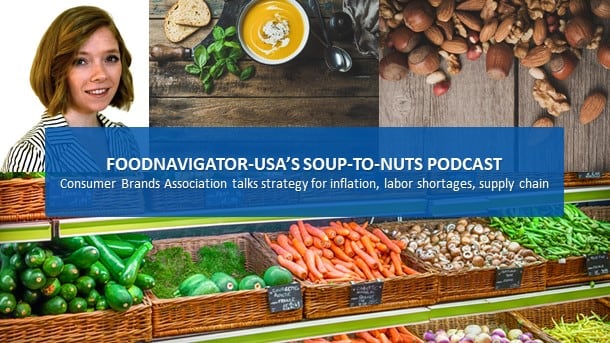While the ongoing heightened demand benefits the CPG industry in many ways, it also is straining supply chains and squeezing margins as manufacturing costs rise, transportation challenges increase and a widespread labor shortage persists despite wage increases and added benefits, CBA notes in it Q2 CPG Economic Pulse Report.
At the same time, the rapid rise of the Delta variant and slowing vaccination rate further complicate supply and demand projections as many Americans return to their homes for safety – the impact of which likely won’t be seen until the third quarter and beyond, the report warns.
To help shore up supply chain bottlenecks and alleviate labor shortages as the pandemic continues to evolve, CBA is calling on the federal government to rethink infrastructure funding, embrace technology to ease transportation strains, strengthen domestic manufacturing and offer enhanced workforce benefits, among other measures.
Demand for CPGs up 8.7% year-over-year
Despite assumptions that consumer demand for CPGs and food consumed at home would begin to drop as coronavirus vaccinations became more readily available and economies began to reopen, sales for the industry held steady in the second quarter.
According to CBA, demand for at-home consumption jumped 8.7% in the second quarter – reflecting steady year-over-year increases in personal consumption expenditures for food and beverages purchased for off-premise, which increased 5.9% in April and 4.6% in May year-over-year despite slight month over month dips of 1.7% in April and 0.5% in May.
In June, month over month purchases for off-premise consumption increased 0.8% and year-over-year was up 5.4%, according to data from CBA.
In June, some of the most significant year-over-year increases for food purchased for off-premise consumption were for sugar and sweets, mineral water/soft drinks/vegetable juices and milk/dairy/eggs, the data shows.
Demand for food consumed at home likely will increase in the third quarter as fears rise of the more contagious Delta variant, predicts CBA, which points to a survey it conducted with Ipsos Aug. 6-8 that found 35% of Americans say they are spending more time at home because of the delta variant and 64% reporting they are spending the same amount of time at home. Only 3% say they are spending less time at home, according to the survey.
Rising costs, labor shortages further tighten margins
This rise in consumer demand has been tempered by rising costs, which are reflected in record-breaking increases of 6.1% in April, 6.5% in May and 7.1% in June in the Producer Price Index. And while manufacturers have passed or plan to pass some of these increases on to consumers, they have also had to finding savings elsewhere to offset what they can not price against.
In addition to higher commodity prices, the CPG industry is grappling with higher transportation costs and less predictable deliveries as port congestion reaches “unheard of highs” and the trucking industry is plagued by labor shortages and other regulatory red tape that is slowing deliveries, CBA notes.
At the same time, many stakeholders are investing more in the workforce to try and offset a labor shortage that hinders the production necessary to meet rising demand, CBA said.
It explains that food manufacturing wages increased 4.6% in July over the prior year, and 6% in the same period for production and non-supervisory roles. And yet, CBA estimates there are still 826,000 openings in the manufacturing, including 362,000 in non-durable manufacturing, currently.
Teamwork could alleviate these pressures
In response to these challenges CBA is proactively working with stakeholders and regulators to find solutions.
For example, the association encourages regulators and legislators to “think in terms of comprehensive performance rather than mode-based programs to reduce congestion, promote quality of life and deliver on consumer and market demands.”
It also advocates for funding increases to the National Highway Freight Program and the Infrastructure for Rebuilding America Program and the adoption of longer-term user fee funding mechanisms that target projects “of national economic and strategic importance.”
Further, CBA is advocating for the adoption of diverse technology that could ease transportation challenges, such as a “truck air traffic control” data tool and fast-tracking autonomous vehicles, and trucking reforms around size and weight to create a more sustainable transport solution.
On the labor front, CBA is urging the launch of a “new workforce partnership to advance education, apprenticeships and support of skilled trades and supply chain professions.” It also wants to encourage a return to work with updated childcare and family support programs and more flexibility around unemployment and assistance programs.
Learn how else CBA is working to address these and other challenges through it support of a federal Office of Supply Chain Resiliency and other efforts.




